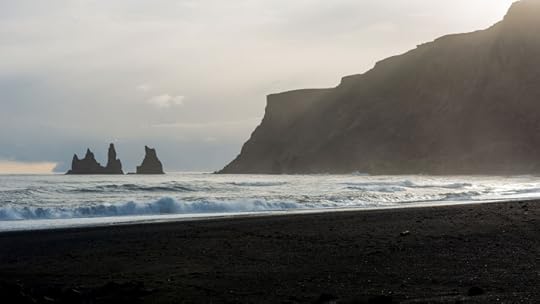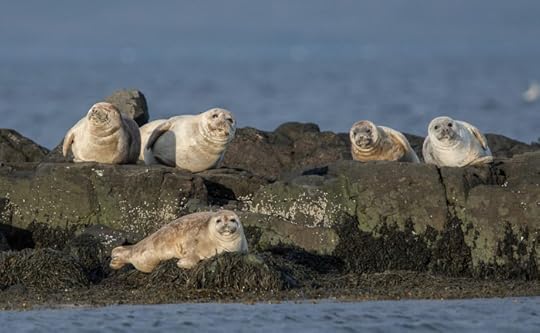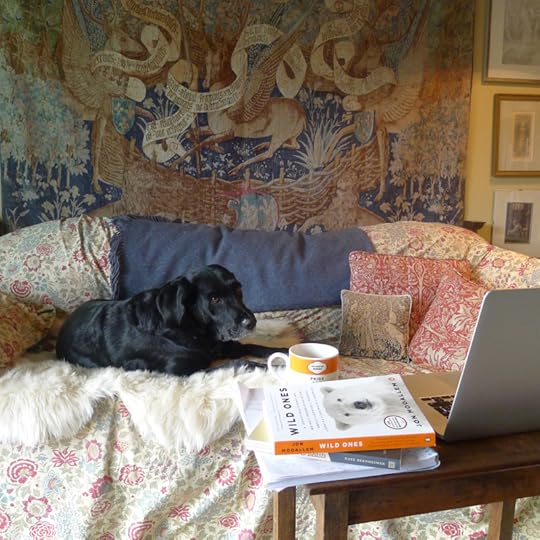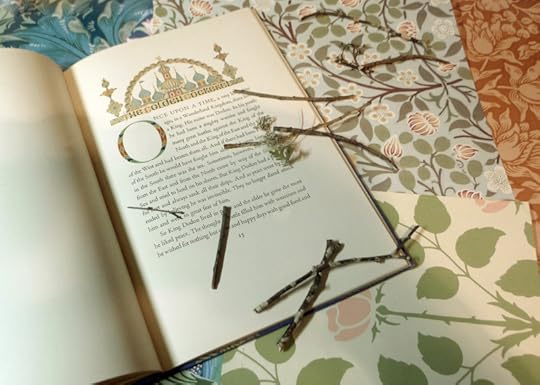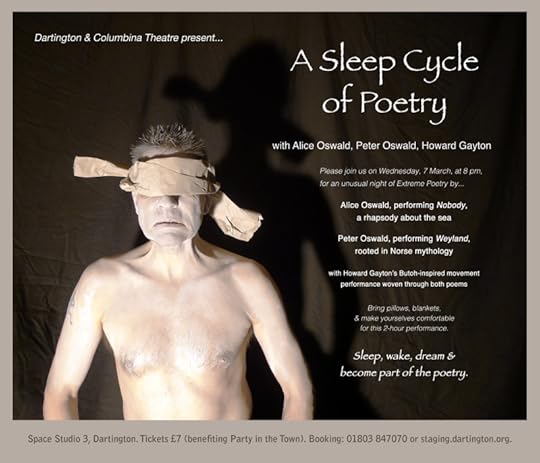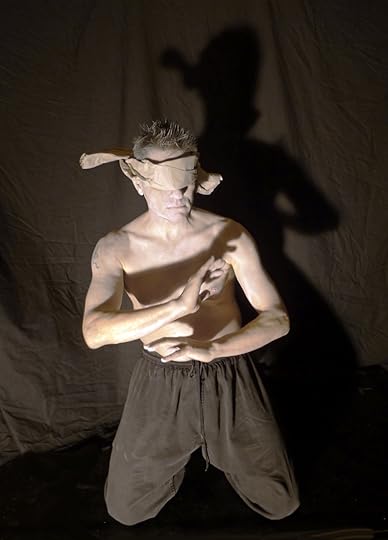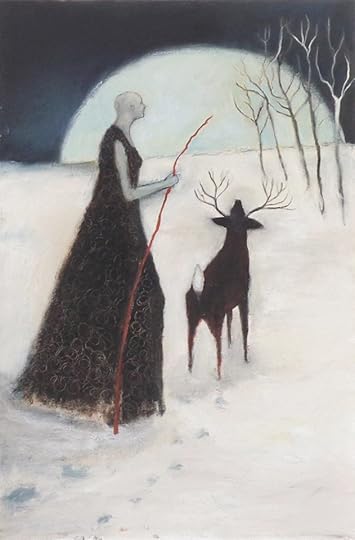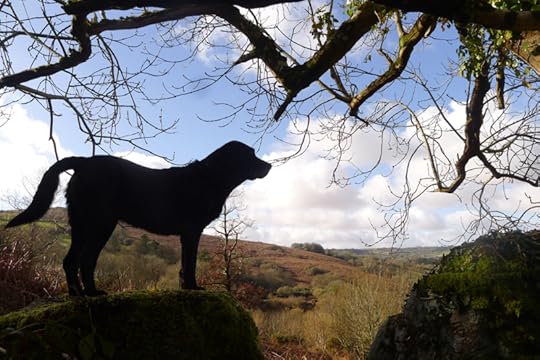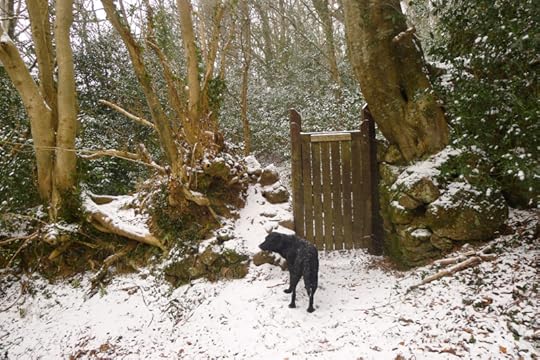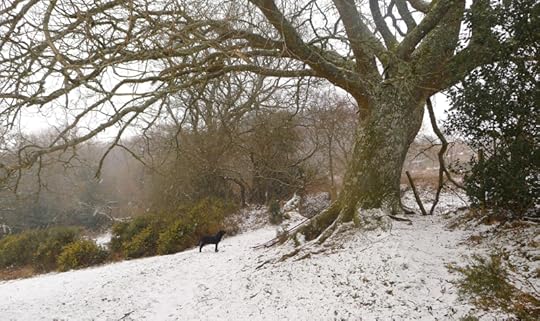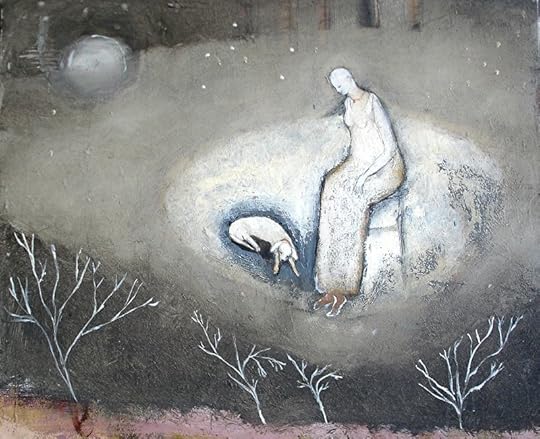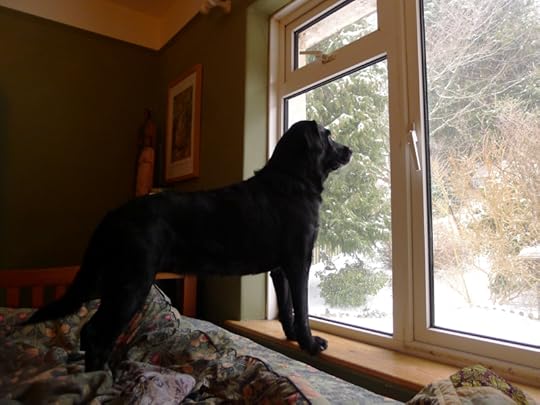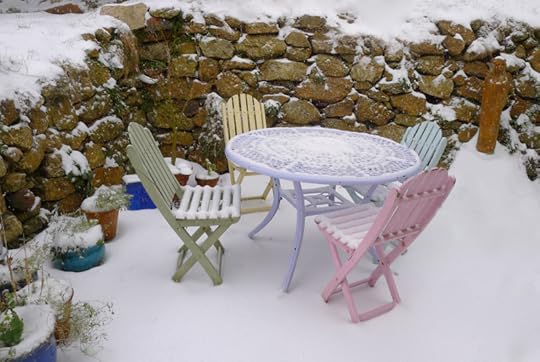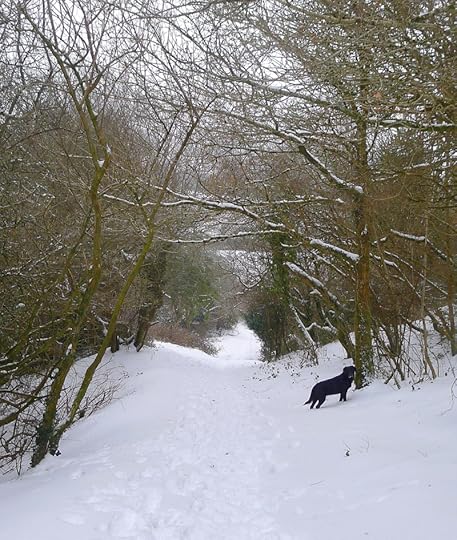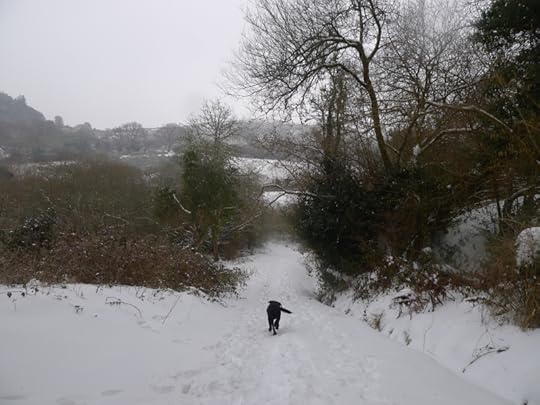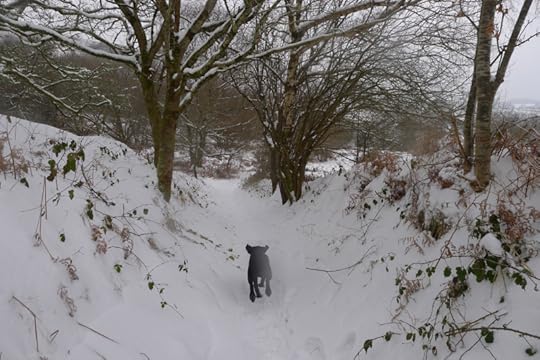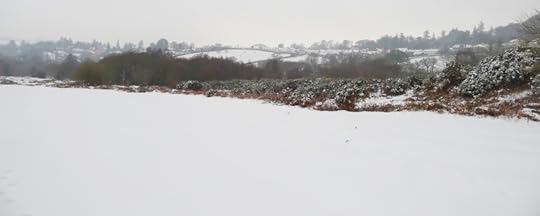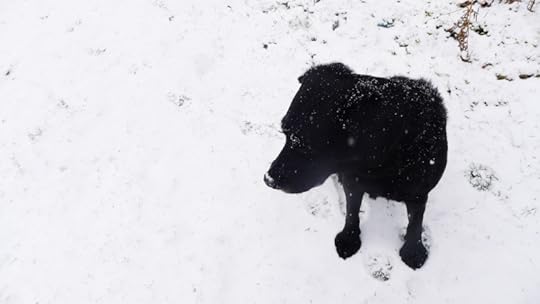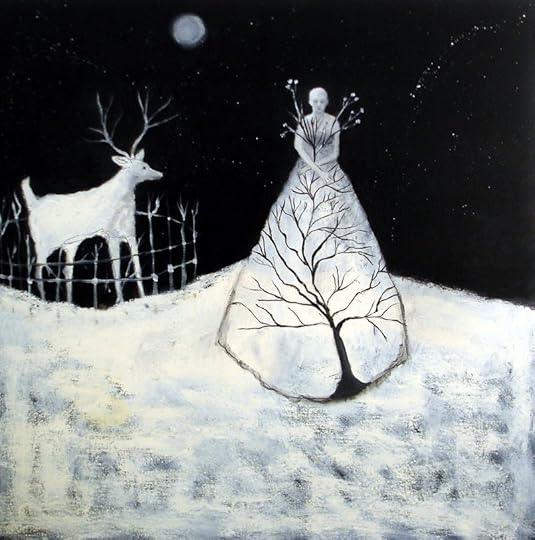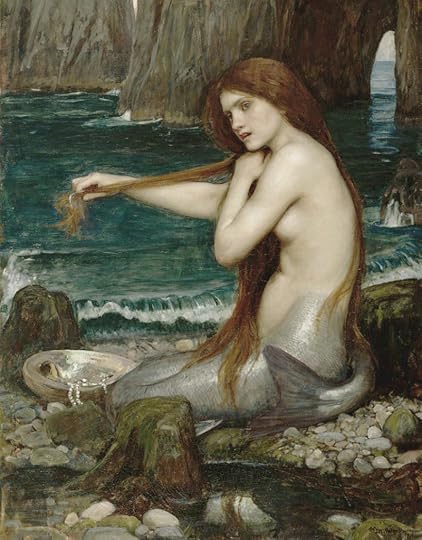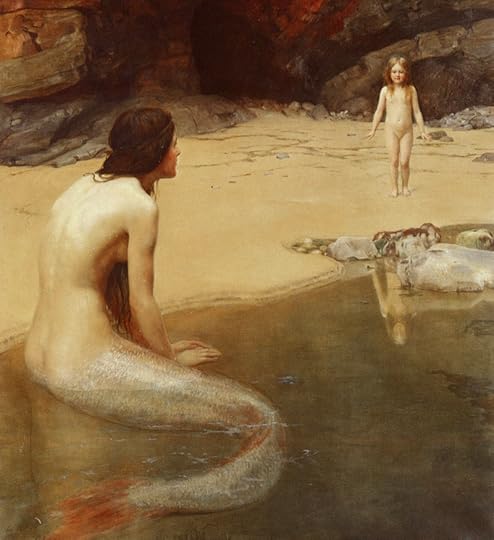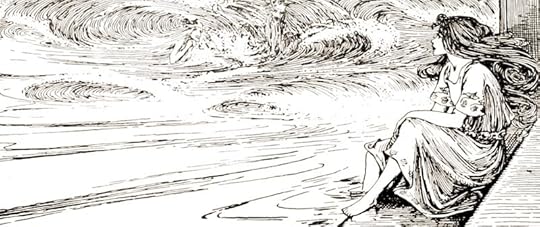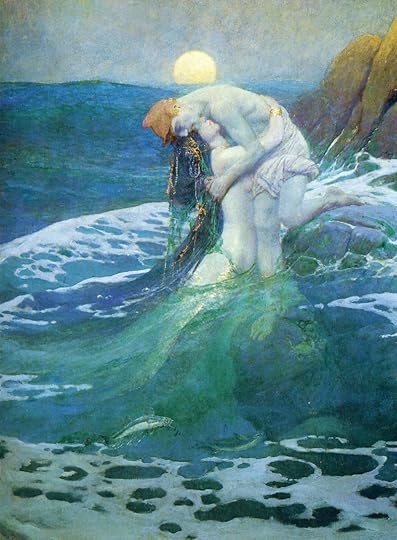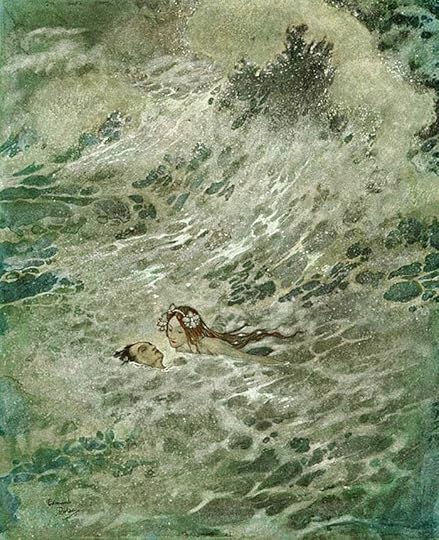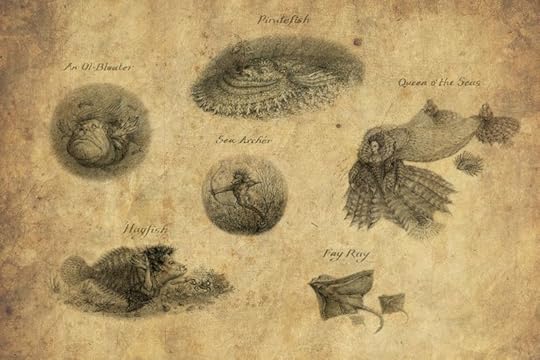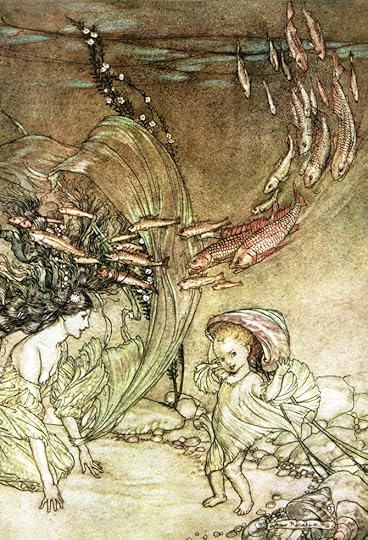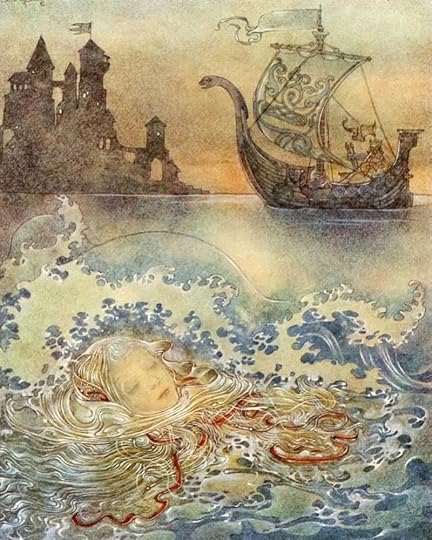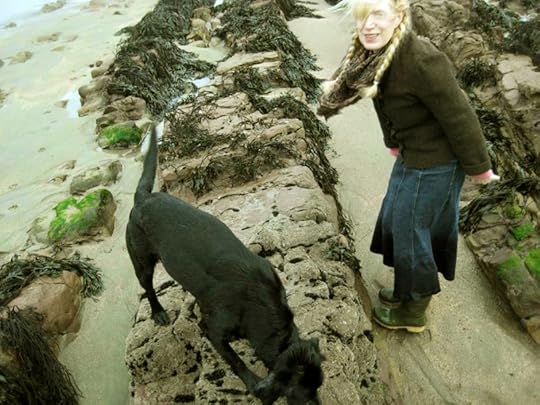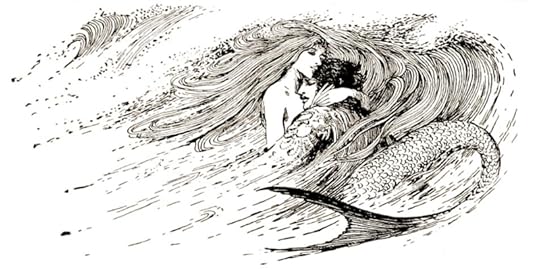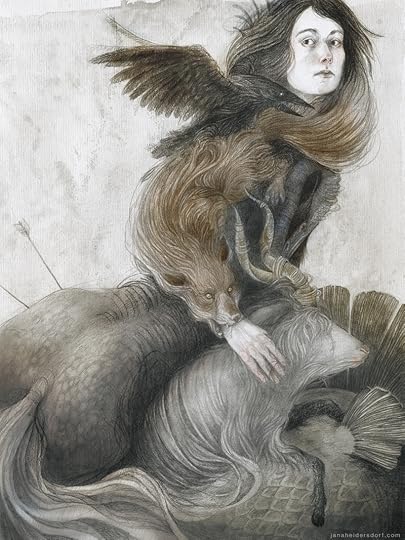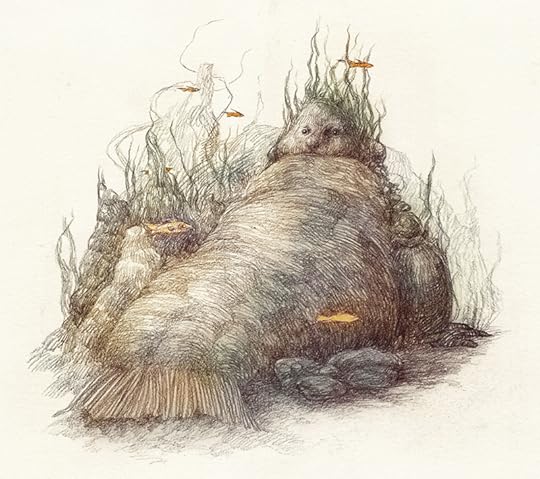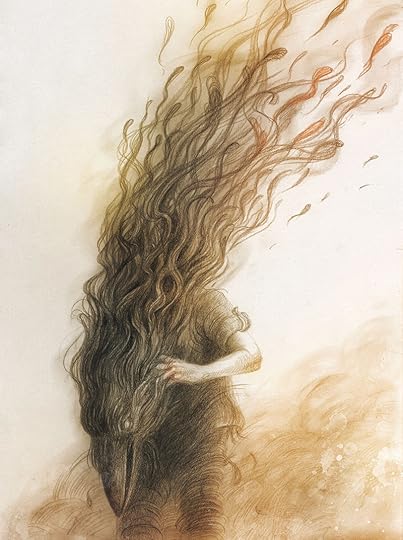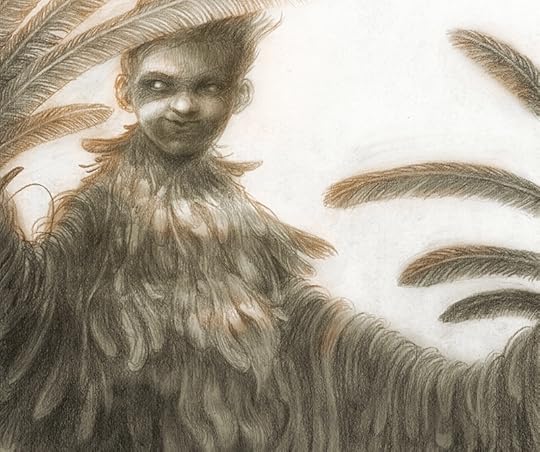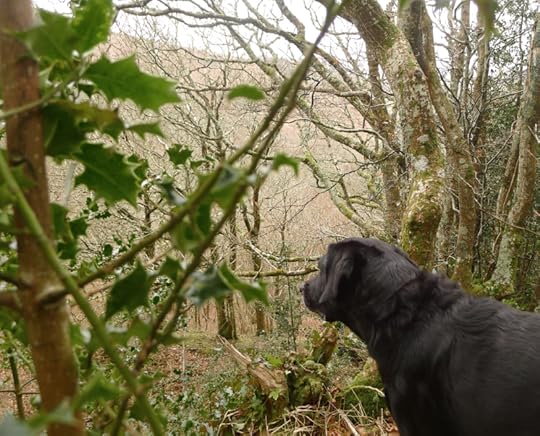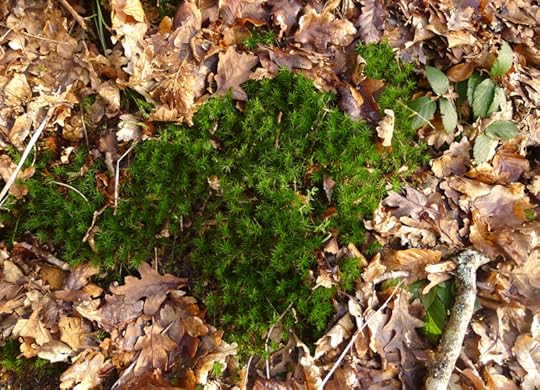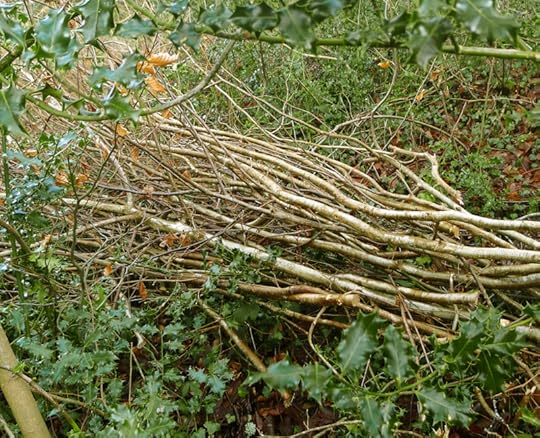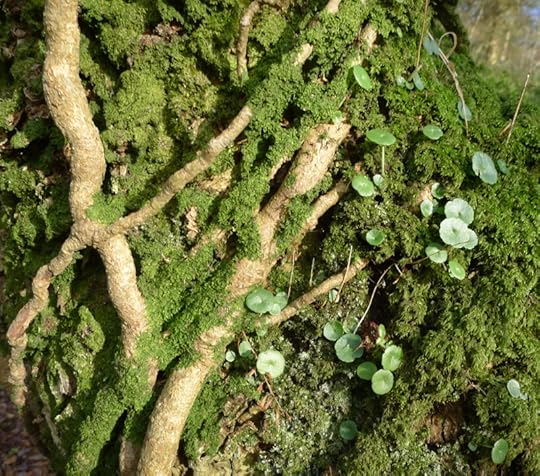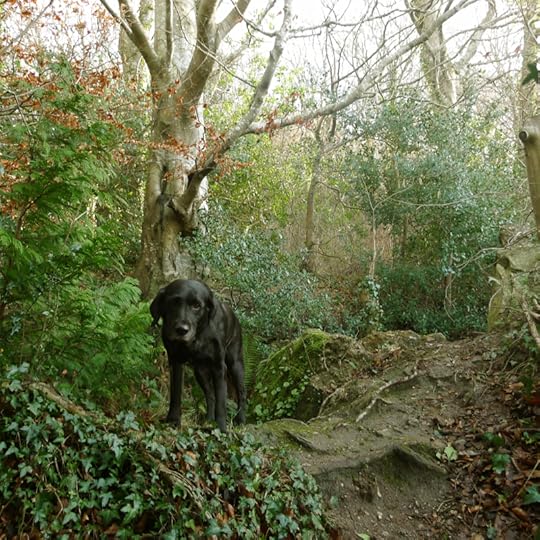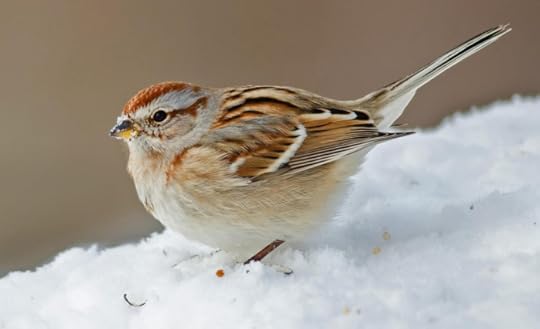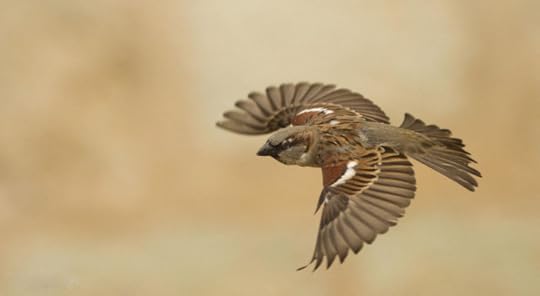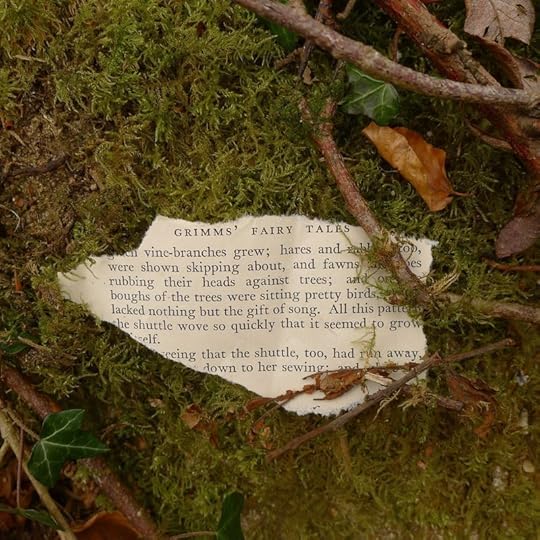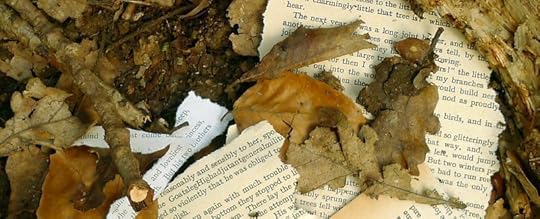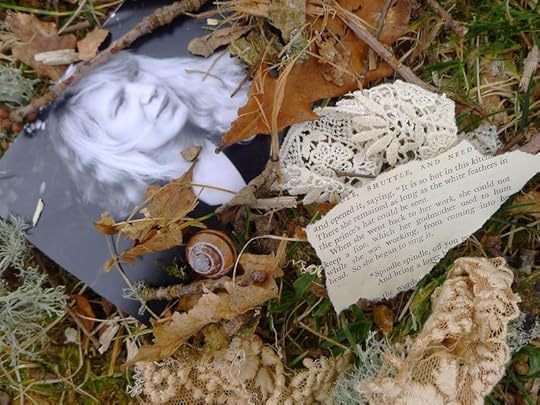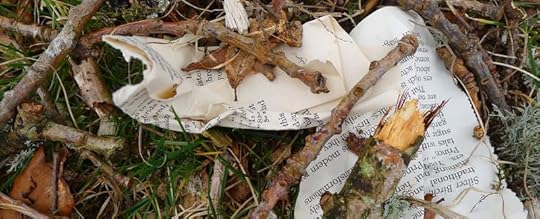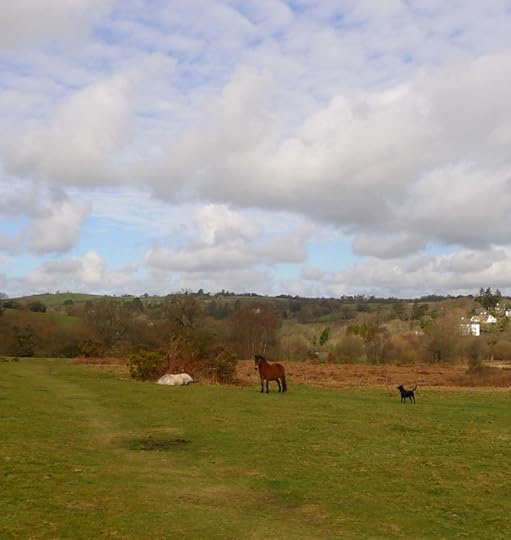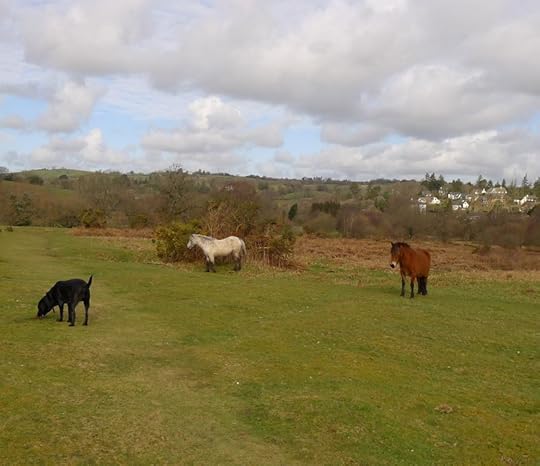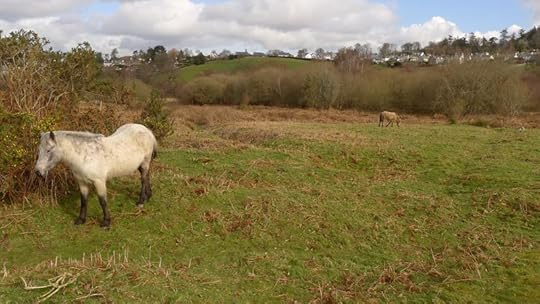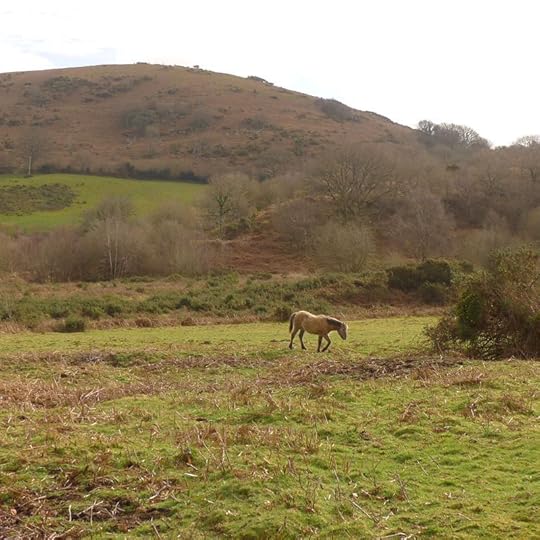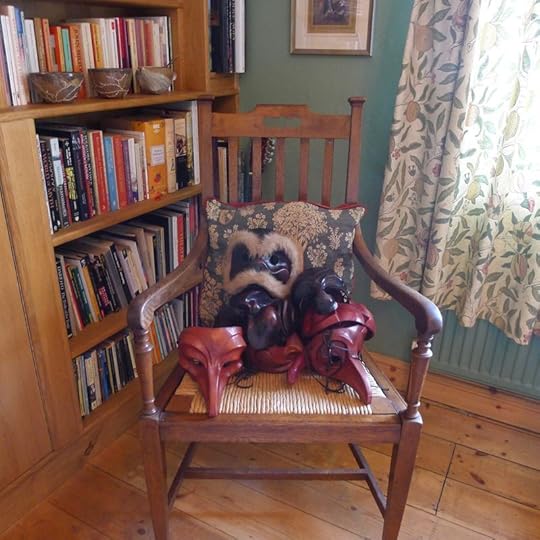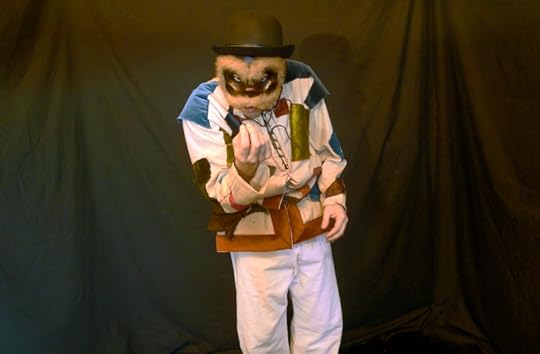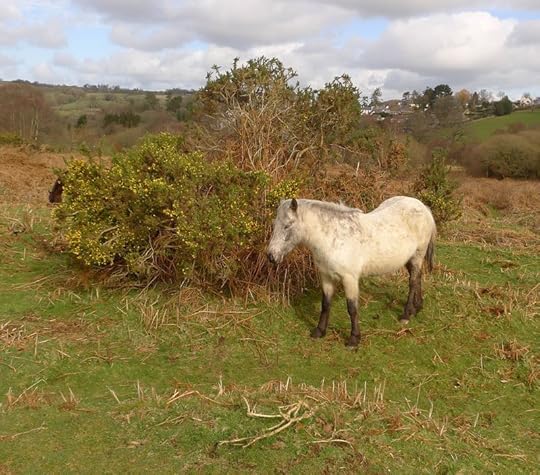Terri Windling's Blog, page 77
March 19, 2018
Tunes for a Monday Morning
On a snowy morning here on Dartmoor, my thoughts have turned northward to the beautiful "Island Songs" created by Icelandic musician and composer ��lafur Arnalds. Arnalds travelled for seven weeks to seven locations, creating seven new works in collaboration with a range of other musicians, each performance documented by Icelandic film director Bladvin Zophon��asson.
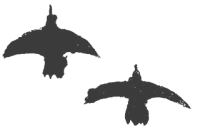 Above, Week One: ��rbakkinn, a collaboration with poet Einar Georg, filmed in Hvammstangi.
Above, Week One: ��rbakkinn, a collaboration with poet Einar Georg, filmed in Hvammstangi.
"Colorful fishing vessels are often moored in the tiny harbour of Hvammstangi," says Arnalds, "a town that sits in the eastern shore of the Mi��fj��r��ur. The name is derived from hvammur, which means 'a green space in a mountain.' The town is home to Einar, a poet and professor of Icelandic language and literature."
Below, Week Two: 1995, a collaboration with organist Dagn�� Arnalds, filmed in ��nundarfj��r��ur.
"The shores of ��nundarfj��r��ur are surrounded by picturesque valleys and mountains -- but in winter this can be a harsh and treacherous landscape. In October 1995, a devastating avalanche struck the village of Flateyri, and now, next to the church, sits a memorial stone bearing the names of all the people whose lives were lost. Dagn�� is a music teacher who lives in this remote place and plays the organ and harmonium in the local churches of Flateyri and Holt."
Above, Week Three: Raddir, a collaboration with conductor Hilmar ��rn Agnarsson and composer Georg K��ri Hilmarsson in Selvogur.
"A small, wooden stave church, known as The Church of Sailors, sits in a solitary landscape, with views of the ocean from a lonely beach. Hilmar and Georg, father and son, gather here with a chamber choir made up of people from the local area."
Below, Week Six: Particles, a collaboration with vocalist Nanna Brynd��s Hilmarsd��ttir (Of Monsters & Men), filmed in Gar��ur.
"Nanna is from the tiny, scattered community of Gar��ur on the Reykjanes peninsula. Two lighthouses sit on the wind-battered seafront, and one of them is the setting for Particles."
Below, Week Seven: Doria, filmed in Reykjavik.
"Reykjav��k is my home," says Arnalds. "For this final week I wanted to concentrate on the people around me, because ultimately it is people, even more than places, who inspire my music and art. Doria was filmed at I��n�� Concert Hall, where I gathered my closest friends, family and the Island Songs contributors for the project's final recording session."
March 5, 2018
Myth & Moor update
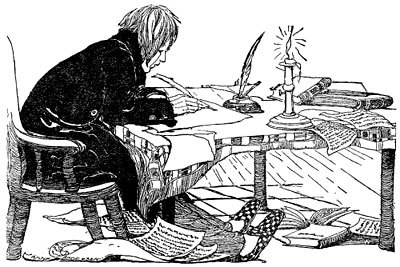 Dear friends, after so many weeks of dealing with flu, I'm behind on everything -- so I'm taking a week off-line in order to catch up on work and correspondence, and to re-engage with the physical world around me here in Devon.
Dear friends, after so many weeks of dealing with flu, I'm behind on everything -- so I'm taking a week off-line in order to catch up on work and correspondence, and to re-engage with the physical world around me here in Devon.
Thank you so much for following Myth & Moor, and being part of the Mythic Arts community here. I'll be back again next week to share music, art, books, myth, and more. I wish you good health, good dreams, good stories, quiets days (or noisy ones, if you prefer), with plenty of time for work, and play, and wild creativity. And creativity in the wild. And wildness, full stop.
Illustration by Anne Anderson (1874-1952)
March 4, 2018
To sleep, perchance to dream
To friends & poetry lovers in the West Country:
You are invited to join two of Britain's finest poets, Alice Oswald and Peter Oswald, along with my dramatist husband, Howard Gayton, for an unusual and extraordinary night of Extreme Poetry.
When: Wednesday, 7 March, at 8 pm
Where: Dartington Hall, Space Studio 3, Totnes, Devon, TQ9 6EN
Tickets: Here, or phone the number above.
(Tickets will also be available on the night; you don't have to pre-book.)
I'm not sure how widely Dartington has publicized the event, so I'm doing my bit to spread the word. Please pass it on to all who might like to come. It's going to be rather special.
To learn more about Alice's work: "Is Alice Oswald our greatest living poet?" by Charlotte Runcie.
To learn more about Peter's work: "Rhyme and Punishment" by Lyn Gardner.
March 3, 2018
Bumblehill in snow
with art by Jeanie Tomanek
All week we'd been hearing about the "Beast from the East," pushing frigid Arctic weather across Europe and covering the British Isles with snow. Storms rolled across Ireland, Scotland, the rest of England...snow fell on Cornwall and the south Devon coast...while here in Chagford, the sun kept shining and the village felt more like Brigadoon than ever, inhabiting a different world with different weather than everyone else.
The hound and I were longing for snow. We hadn't seen snow, not proper snow, for several winters on the trot...just frost, or hail, or flurries that lightly glazed the hills then disappeared...not real snow like the storms of 2013, 2012, 2010, and many years before.
On Wednesday night, the temperature dropped. On Thursday morning, we woke to snow.
It was just a powdery dusting to begin with, but I dressed in a hurry and grabbed my coat. Tilly burst out the kitchen door, ecstatic; she bound up the hill behind our house, rounded past the studio, leapt over the iced-up stream behind it and pelted into the woods. She loves the snow. And so do I, taking pleasure in Tilly's keen delight, and the eternal, ephemeral magic of weather: the way that between one hour and next the land becomes a winter's fairy tale, a far outpost of the Snow Queen's realm.
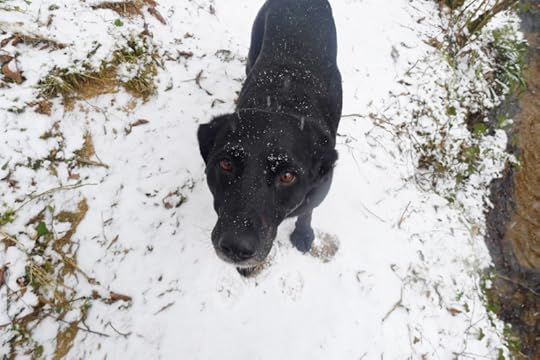
By afternoon, it was snowing hard. By nightfall, the lanes had drifted over; the village was entirely snowed in. The storm raged as we went to sleep, and I wondered whether it would truly last...or if we'd wake to dreary rain again, the snow melted and gone.
The next morning, Tilly stared out the bedroom window. Snow! Snow! Proper snow!
Too excited to wait for me to eat my breakfast, she bounced out the back door to the courtyard, where potted plants were buried in white and our "Lady of Bumblehill" statue (by Wendy Froud) had skirts of ice. The hound ran in circles while I finished my coffee, laced on sturdy winter boots, dug out my warmest mittens, and then followed my dog outside.
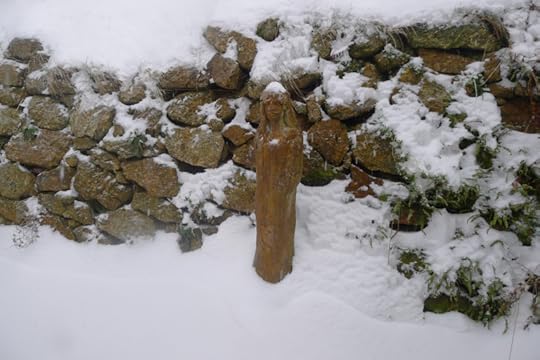
This time, we headed down the hill, slipping and sliding down a steep and icy road until we reach the path to Meldon Commons, blanketed by snow and silence.
The snow fell thick and steadily. No cars moved through the village today, and the loudest sound was the laughter of children sledging on a hill nearby.
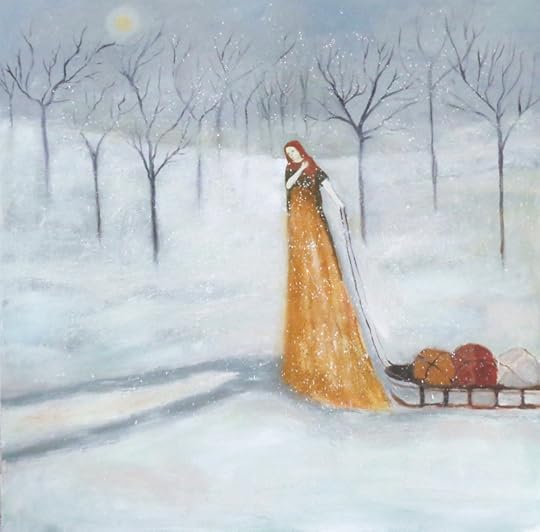
Tilly led the way, breaking through the snow's thin crust, forging the path I followed. We were was not the first to use this trail. There were other foot prints, paw prints, pony prints...
...but we met no one along the way and when we reached the Commons, it was empty too. Just a vast white field, a vast white sky. A snow-speckled dog. And me.
"I am a book of snow," wrote Pablo Neruda, "a spacious hand, an open meadow, a circle that waits, I belong to the earth and its winter."
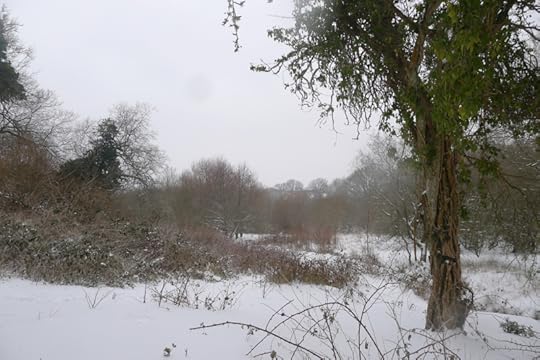
The hound and I, we belong to earth and the winter too, I thought as we crossed through bramble thorns and gorse, ice crackling with our steps.
But my toes were cold, Tilly's nose crusted with ice. Back home, a fire in the Rayburn stove poured heat, like love, from the kitchen hearth. (In the long winter months it feels like warmth and love are the same thing.) I belonged to earth, but I was made of blood and bones, and I was shivering....
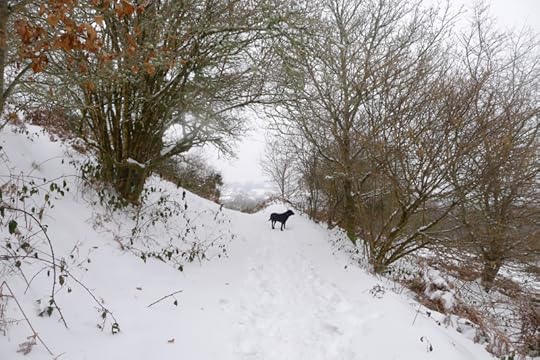
So I turned around, and whistled once. The hound came running at my call.
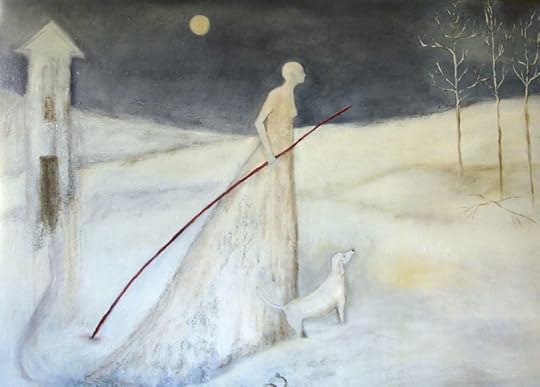
Our homeward path lay entirely uphill: steep, icy, and treacherous. I was tired now, still fragile after weeks of flu, a little unsteady on my feet. I tightened my scarf, brushed ice from Tilly's fur, and told her: Yes, you can lead the way.
She walked ahead, pacing her steps, stopping every so often to check on me.
We'll be home soon. I can feel the warmth of the stove already....
Lead on. Lead on.
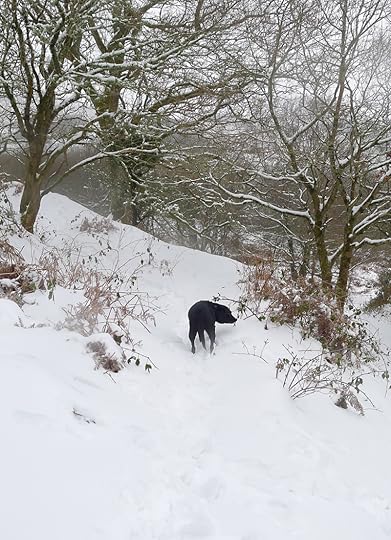
The art today, of course, is by the extraordinary Jeanie Tomanek. Go here to see more.
March 1, 2018
Sentences & Mermaids
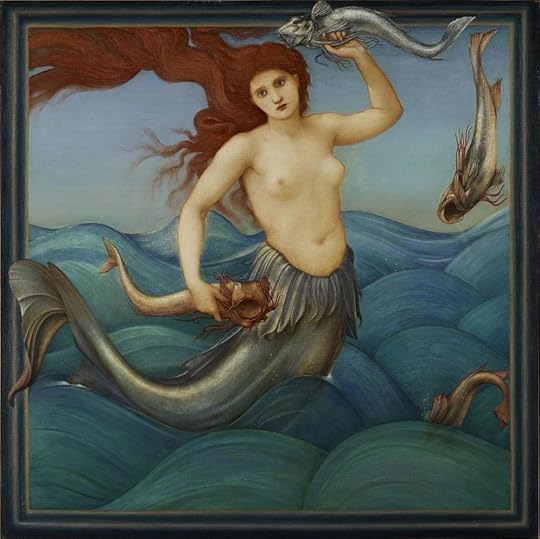
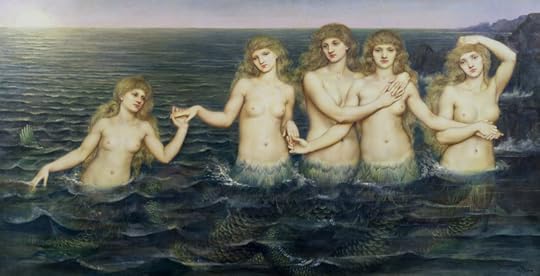
"In her book The Writing Life, Annie Dillard tells the story of a fellow writer who was asked by a student, 'Do you think I could be a writer?' 'Well,' the writer said, 'do you like sentences?' The student is surprised by the question, but Dillard knows exactly what was meant. He was being told, she explains, that 'if he likes sentences he could begin,' and she remembers a similar conversation with a painter friend. 'I asked him how he came to be a painter. He said, "I like the smell of paint." The point, made implicitly (Dillard does not belabour it), is that you don't begin with a grand conception, either of the great American novel or masterpiece that will hang in the Louvre. You begin with a feel for the nitty-gritty material of the medium, paint in one case, sentences in the other."
"A lot of the work I do is taking the bare sentence that says what you sort of want to say -- which is where a lot of writers stop -- and making it into an arching kind of thing that has both strength and beauty. And that is where the sweat comes in. That can take a long time and many revisions. A single sentence, particularly a long, involved one, can carry a story forward. I put a lot of time into them. Carefully constructed sentences cast a tint of indefinable substance over a story���.
"There is difficulty involved in going from the basic sentence that���s headed in the right direction to making a fine sentence. But it���s a joyous task. It���s hard, but it���s joyous. Being raised rural, I think work is its own satisfaction. It���s not seen as onerous, or a dreadful fate. It���s like building a mill or a bridge or sewing a fine garment or chopping wood���there���s a pleasure in constructing something that really works."
"My morning begins with trying not to get up before the sun rises. But when I do, it's because my head is too full of words, and I just need to get to my desk and start dumping them into a file. I always wake with sentences pouring into my head."
I wake up in the morning and my mind starts making sentences and I have to get rid of them fast -- talk them or right them down.
"The sentences I write have their roots in song and poetry, and take their bearings from music and painting, as much as from the need to impart mere information, or mirror anything. I am not a realist writer, even if I seem like one."
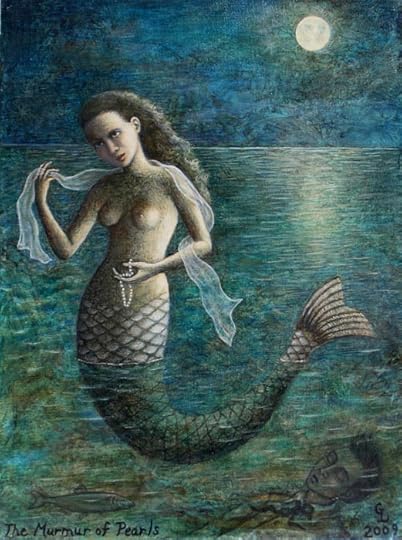
"I've got to hear the rhythm of the sentences; I want the music of the prose. I want to see ordinary things transformed not by the circumstances in which I see them but by the language with which they're described."
"I love long sentences. My big heroes of fiction writing are Henry James and Proust - people who recognize that life doesn't consist of declarative statements, but rather modifications, qualifications and feelings."

"My sentences tend to be short and rather spare. I'm more your paragraph kind of gal."
"When you're writing there's a deep, deep level of concentration way beyond your normal self. This strange voice, these strange sentences come out of you."
"A sentence is both the opportunity and limit of thought-- what we have to think with, and what we have to think in."
"Even printed, on pages that are bound, sentences remain unsettled organisms. Years later, I can always reach out to smooth a stray hair. And yet, at a certain point, I must walk away, trusting them to do their work. I am left looking over my shoulder, wondering if I might have structured one more effectively."
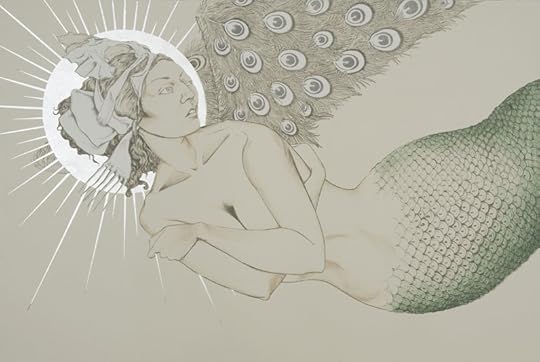
Don't romanticize your 'vocation.' You can either write good sentences or you can't. There is no 'writer's lifestyle.' All that matters is what you leave on the page.
The pictures are identified in the picture captions. (Run your cursor over the images to see them.)
February 27, 2018
Myths & shibboleths
From Startle & Illuminate: Carol Shields on Writing:
"Writing is a mysterious process, and this vagueness about it makes it into a mystique. Writing is so various; it rises up from so many curiously undetectable springs, it has so many contradictory intentions, and critical judgement swings so wildly that what is good writing in one decade is execrable in the next.
"Like every mystique, it has its sets of shibboleths, its injunctions and freedoms, some of them true or untrue, helpful or harmful, and a good many constitute a systematic discouragement for the beginning writer. Let me mention a few of these myths.

"Writing is a performance. This statement has the impact of aphorism, and aphorism is something we must fix with a wary eye. It sounds good; therefore it must be true. Most writers will say that writing is a matter of groping your way to some kind of truth, an act of exploration. Joan Didion plainly said that she writes so she can know what she is thinking, and V.S. Pritchett, a writer I particularly admire, said that he wrote so he could feel out the surface of what he is and where he lives. Notice the implicit modesty of these statements. And notice the moderate though not unintelligent voice. And notice how these assessments remove the burden some writers feel that they must make every word shimmer and every insight dazzle. Survey the whole field of fiction and you will see that pyrotechnics are only a small part of it. There is a great deal of moving people around and listening to what they are saying.
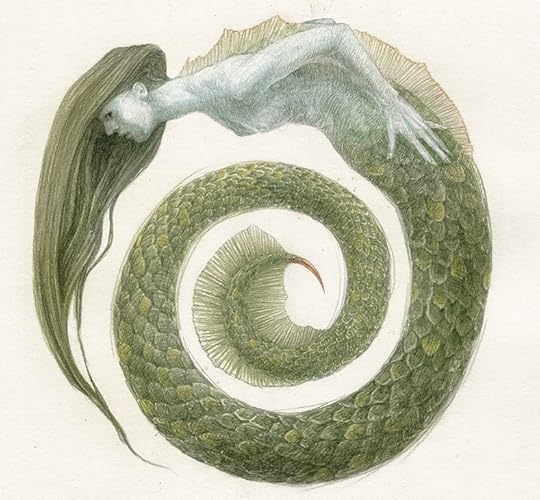
"Another injunction, a double one this time. All fiction is a form of autobiography. And the command: Write about what you know. This is a serious problem for a beginning writer since there's a good chance he undervalues what he knows and a good chance, too, that he doesn't want to risk exposure. Writers of course draw on their own experiences, but the fact is, few draw directly. As Alice Munro wrote in an essay entitled 'What is Real' in the magazine Canadian Forum, she requires for her fiction a portion of actual experience that acts as a kind of starter dough -- I'm assuming you're familiar with bread-baking terminology. John Irving, a writer I have grave reservations about, said in an essay that his writing comes out of the act of revising and redeeming actual experience. Pritchett goes all the way, saying a fiction writer's first duty is to become another person.
"One of the most discouraging admonitions is this: Don't write until you have something to say. How often have you heard that one? Clearly everyone has something to say, whether she writes it down or not. You don't get to the age of six without knowing fear or intense happiness. You don't get to the age of twelve without having suffered. You don't arrive at eighteen without knowing what it is to love someone or, just as painful, not to love someone. Everyone has something to say; it may not be codified or arranged in the neat linear patterns of philosophy or the point of view of political commitment or as a moral conviction, but the raw material is there, the 'something' to write about.
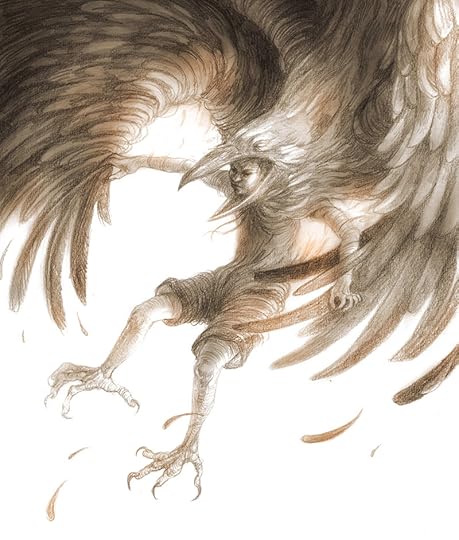
"There's a novel in everyone. You've heard this one. It's a myth that has suffered misinterpretation. There probably is material enough and more in every life, but does this mean that anyone, given time, can write a novel? Time is what you sometimes hear people say they need. In fact, I have heard of one writer who got so tired of hearing people say 'I'd write a book if I had the time,' that when he came to write his autobiography he titled it I Had Time. Time isn't enough. Skills of observation and skills of language (attention to rhythm, extension of vocabulary and distortion of syntax) are required. A feeling for structure. Stamina -- for it takes an extraordinary effort to write even a bad novel or completed short story.
"Finishing has always seemed important to me. The end of a story is as important as the process. The feeling of completion, however imperfect, is what makes art -- when we feel something being satisfied or reconciled or surrendered or earned."
The imagery today is by Jana Heidersdorf, an illustrator and animator in Germany whose art is inspired by folklore, fantasy literature, and the natural world. Her work is filled with animals, birds, and various forms of aquatic life, all viewed through the lens of myth, surrealism, and the darker side of fairy tales. "There is mystery in unpredictability and wildness," she says. "I have an undeniable romantic side that idealizes the rawness and chaos of nature, especially opposed to our need as humans to categorize and order everything. One of the reasons I primarily like to draw animals, or at least non-humans such as mermaids, is that we cannot apply our set morals to them. They can be scary or dangerous, but never evil. That���s something that fascinates me."
To see more of her magical art, please visit her website, Tumblr, and Patreon page.
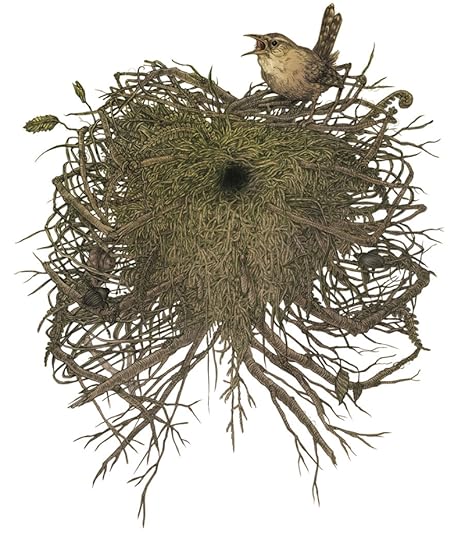
Words: The passage above is from Startle and Illuminate: Carol Sheilds on Writing, edited by Anne and Nicholas Giardini (Random House Canada, 2016). All rights reserved by the author's estate. Pictures: Jana Heidersdorf's art above includes illustrations for "The Seven Ravens" (a Grimms' fairy tale), and the "100 Mermaids" project. Identification can be found in the picture captions. (Run your cursor over the images to see them.) All rights reserved by the artist.
It begins with noticing
From Moments of Being by Dani Shapiro:
"As I write, a hard rain is pelting against yesterday���s snow, and patches of dark green, wet stone, fallen twigs are visible just beneath fields of translucent ice. A world, submerged, slowly reveals itself. It reminds me of what it is to make a book -- or, perhaps, what it is to live a life.
"A world -- submerged -- reveals itself.
"It begins with noticing. Something buried rustles and stirs. If we���re quiet and attentive enough, we may notice the stirring. What is this? Perhaps we poke at it. Or maybe we turn our backs. Run away. We ignore it. Or we don���t notice at all. We stick our fingers in our ears and hum a merry little tune. If we don���t notice, the noise might grow a bit louder, but maybe the contents of that submerged world -- that beast -- will turn over and go back to sleep. At least for a little while.
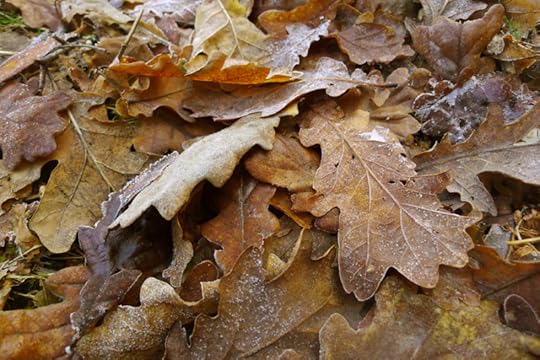
"The thing about the writing life -- or any creative, contemplative, solitary life, really -- is that merry little tunes don���t work. Not in the long run. Not even in the short run. What we ignore, we ignore at our own peril. What we embrace with courage, perseverance, humility, and clarity, becomes our instrument of illumination. This is why I often say that when I���m not writing, I���m not well. What I mean by this is that my mind and my heart begin to become unknowable to me, because the way I come to know myself is through following the line of words until the ice melts, until the field once again becomes visible. Countless times, over the course of these thirty years of writing, I have looked back at a piece of my own work and realized: so that���s what I was thinking. That���s what I was feeling. I had no idea."
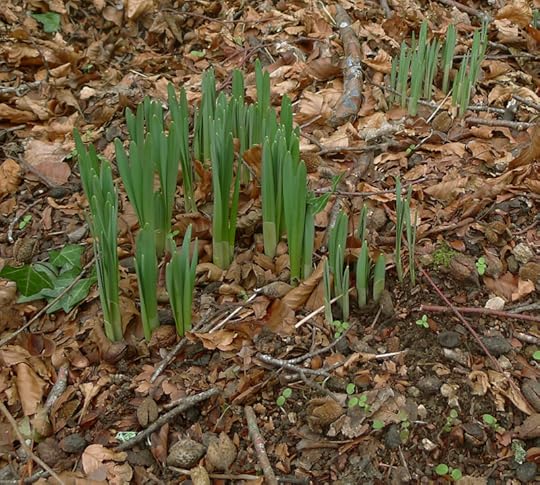
From Red: Passion & Patience in the Desert by Terry Tempest Williams:
"I write to make peace with the things I cannot control. I write to create red in a world that often appears black and white. I write to discover. I write to uncover. I write to meet my ghosts. I write to begin a dialogue. I write to imagine things differently and in imagining things differently perhaps the world will change. I write to honor beauty. I write to correspond with my friends. I write as a daily act of improvisation. I write because it creates my composure. I write against power and for democracy. I write myself out of my nightmares and into my dreams. I write in a solitude born out of community. I write to the questions that shatter my sleep. I write to the answers that keep me complacent. I write to remember. I write to forget���.
"I write because it is dangerous, a bloody risk, like love, to form the words, to say the words, to touch the source, to be touched, to reveal how vulnerable we are, how transient we are. I write as though I am whispering in the ear of the one I love."
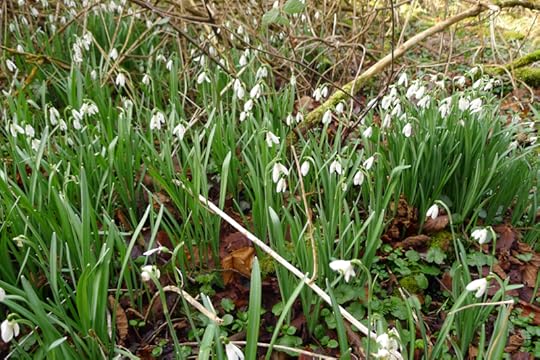
''I write -- though perhaps it sounds pretentious to say so -- to make a clearing in the wilderness, to find out what I care about and what exactly to make of it.''
"I believe there is hope for us all, even amid the suffering -- and maybe even inside the suffering. And that���s why I write fiction, probably. It���s my attempt to keep that fragile strand of radical hope, to build a fire in the darkness."
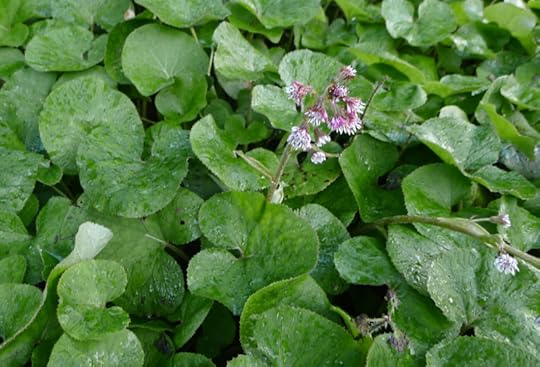
''Every story I create, creates me. I write to create myself.''
Words: The Dani Shapiro passage above is from "On the Submerged World," published on her blog Moments of Being (February 16, 2016). The passage by Terry Tempest William is from her gorgeous essay, "A Letter to Deb Clow," which I recommend reading in full. You'll find it in Red: Passion & Patience in the Desert (Vintage, 2002). The shorter quotes above, and tucked into the picture captions, are from a wide variety of essays and interviews. All rights to the text above reserved by the respective authors.
Pictures: Moments in a Devon winter, on the cusp of spring.
February 26, 2018
Tunes for a Monday Morning
Today's songs are all from the troubled, complicated, enraging, inspiring, enormously diverse and utterly beautiful country of my birth...
Above: "Little Sparrow" by Leyla McCalla, from her second album A Day for the Hunter, A Day for the Prey (2016). McCalla, an extraodinary young cello and banjo player of Haitian Creole heritage, grew up in the New York area and is now based in New Orleans.
Below: "Bring Your Love to Me" by the wonderful Avett Brothers from North Carolina: singer/songwriters Seth & Scott Avett, backed up by Bob Crawford on double bass and Joe Kwon on cello. The song appears on their eighth studio album, Magpie and the Dandelion (2013). The shadow puppetry in the video is by Hobey Ford.
Above: "Winners " by the bluegrass & roots band Trampled by Turtles from Minnesota, in the American Midwest. The band is: Dave Simonett, Tim Saxhaug, Dave Carroll, Erik Berry, and Ryan Young. The song appears on their eighth album, Wild Animals (2014).
Below: "Call it Dreaming" by Iron & Wine: the stage name of singer/songwriter Sam Beam, from the Carolinas. The song appears on his lovely eighth album, Beast Epic (2017).
Above: "Tus Pies" by Nakho Bear, a brilliant young musician/activist of Apache, Mohawk, Puerto Rican & Filipino heritage. Nahko grew up in the Pacific Northwest, and is now based in Hawaii. I love this song, and this simple performance, filmed in New York City in 2016.
Below, to end with: "Good to Be Alive Today" by a musician/activist of my own generation: the beautiful and big-hearted Michael Franti, who hails from northern California. The song appears on Soulrocker (2017), the ninth studio album by Franti and his reaggae/roots/rock/soul/jazz band, Spearhead. This man's love and passion never flags. I want to be the same.
February 22, 2018
Why one writes
"Why one writes is a question I can answer easily, having so often asked it of myself. I believe one writes because one has to create a world in which one can live. I could not live in any of the worlds offered to me ��� the world of my parents, the world of war, the world of politics. I had to create a world of my own, like a climate, a country, an atmosphere in which I could breathe, reign, and recreate myself when destroyed by living. That, I believe, is the reason for every work of art."
- Ana��s Nin (The Diaries, Volume 5)
"Life isn���t about finding yourself. Life is about creating yourself." - George Bernard Shaw
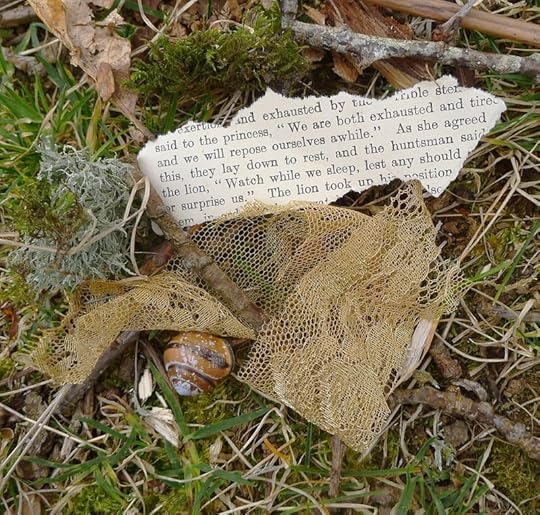
And so I create a world in which I can live through stories and pictures of spirited landscapes steeped in Mystery, music, and quiet acts of women's magic. I create myself every day here in the hills amid old stone walls and buttercup fields, out of scraps of paper and fragments of verse and morning coffee and dreams underfoot and books and bees and brambles and briar roses and a black dog at my side.
"A writer is dreamed and transfigured into being by spells, wishes, goldfish, sillouettes of trees, boxes of fairy tales dropped in the mud, uncles' and cousins' books, tablets and capsules and powders...and then one day you find yourself leaning here, writing on that round glass table salvaged from the Park View Pharmacy -- writing this, an impossibility, a summary of who you came to be where you are now, and where, God knows, is that?"
- Cynthia Ozick (Art & Ardor)
Why, it's here. Where I am. Where you are. Right now.
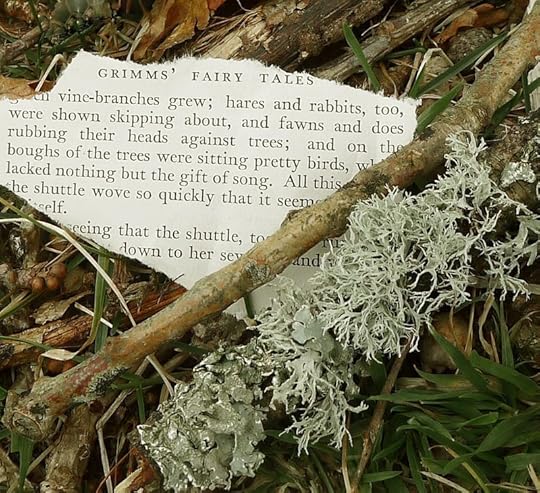 This post first appeared on Myth & Moor in the spring of 2012. Flu recovery continues, and I still hope to be back in the studio on Monday, with new posts in the week ahead.
This post first appeared on Myth & Moor in the spring of 2012. Flu recovery continues, and I still hope to be back in the studio on Monday, with new posts in the week ahead.
When the magic is working
From "Seeing Around the Corners" by Susan Cooper (1976):
"But of course, the whole process is a mystery, in all the arts. Creativity, in literature, painting, music. Or in performance: those rare lovely moments in the theater when an actor has the whole audience in his hands suddenly like that. You may have all the technique in the world, but you can't strike that spark without some mysterious extra blessing -- and none of us knows what that blessing really is. Not even the writers, who talk the most, can explain it at all.
"Who knows where the ideas come from? Who knows what happens in that shadowy part of the mind, something between Plato's cave and Masterlinck's Hall of the Night, where the creative imagination lies? Who knows even where the words come from, the right rhythm and meaning and music all at once?
"Those of us who make books out of the words and ideas have less of an answer than anyone. All we know is that marvelous feeling that comes, sometimes, like a break of sunshine in a cloud-grey sky, when through all the research and concentration and slog -- suddenly you are writing, fluently and fast, with every sense at high pitch and yet in a state almost like a trance.
"Suddenly, for a time, the door is open, the magic is working; a channel exists between the page and the shadowy cave in the mind.
"But none of us will ever know why or how."
Like Cooper, I'm fascinated by the various ways one finds this state of trance, or magic, or flow, or grace (call it what you will). Discovering our personal methods for reaching it best -- with the least amount of struggle, the fewest obstacles put in our own way -- is surely one of the most useful skills we learn over a lifetime in the arts.
My husband is a director, performer, and teacher who specializes in mask theatre -- such as Commedia dell'Arte: a traditional form of slapstick comedy that is also deeply archetypal. As a teacher, he trains university-level drama students how to work with masks -- which requires finding that same state of trance in order to let the "mysterious blessing" come through to bring the masks fully to life.
In mythic terms, he is the psychopomp, leading his students from one world into the next -- from time-bound daily reality into the timeless flow of performance art -- but the goal, when their classroom days are done, is to have the skill to cross over on their own, using their own best methods of travel.
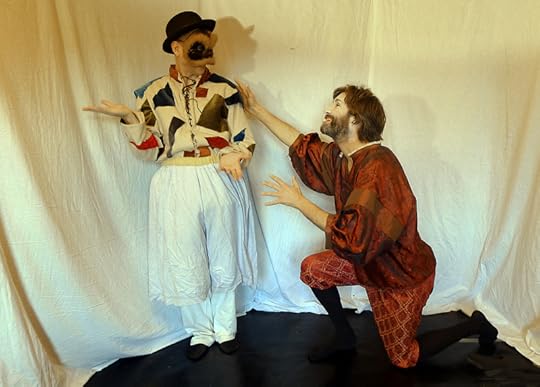 The masked Servant & the Poet in rehearsals for "Sorry About the Poetry"
The masked Servant & the Poet in rehearsals for "Sorry About the Poetry"
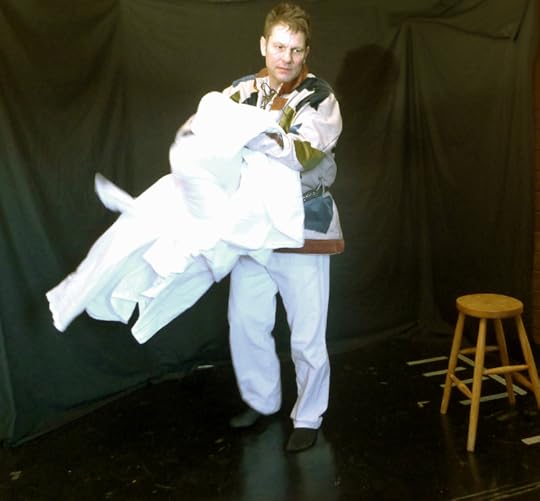 Howard returning from "mask state" at rehearsal's end
Howard returning from "mask state" at rehearsal's end
The students are at the start of their creative lives, and I remember well what those years felt like -- when you think you know what art requires, and then the realization comes that you must go deeper and deeper still (if you're serious at all) into the unknowable, uncomfortable, vulnerable place where the root of creativity lies...which is to say, you must go deeper and deeper into yourself, which can be daunting indeed.
Even now, after all these years, I still have days of sharp (or anxious, or befuddled) resistance to this act of deep surrendering...but the joy of age is that I know my own process now, the daily habits, practices, and mindset that will carry me past each block and obstacle and back into the work of writing,
Every day I breathe deep, open up the heart again, and let the Mystery in.
Words: The passage by Susan Cooper is from Dreams & Wishes: Essays on Writing for Children (Margaret K. McElderry Books, 1996). The poem in the picture captions is from River Flow by David Whyte (Many Rivers Press, 2012). All rights reserved by the authors. Pictures: Wild ponies grazing on the village Commons; Commedia dell'Arte masks in our livingroom several years ago (there's been a change of curtains and rugs since then); and Howard with Peter Oswald in an early rehearsal for Peter's Commedia-inspired play, Sorry About the Poetry.
This post first appeared on Myth & Moor in March 2014 (although the mask-theatre rehearsal pictures are new). My apologies for the lack of new post this week. I'm still recovering from flu, but hope to be back to a normal studio schedule by Monday. Fingers crossed.
Terri Windling's Blog
- Terri Windling's profile
- 708 followers


